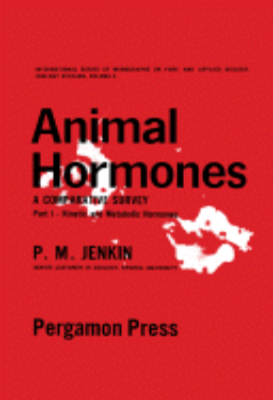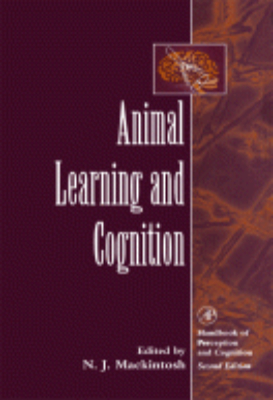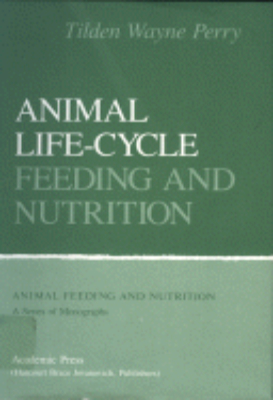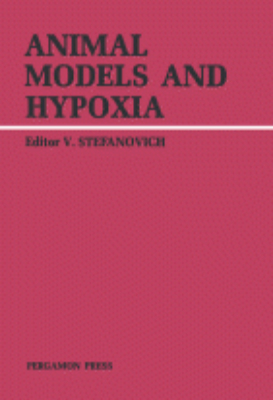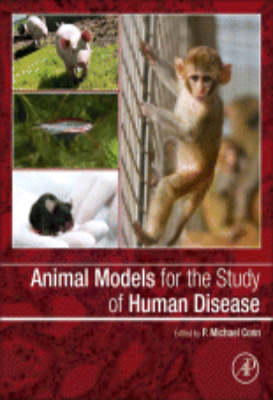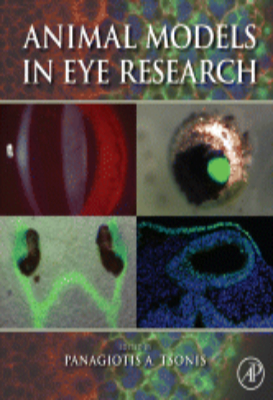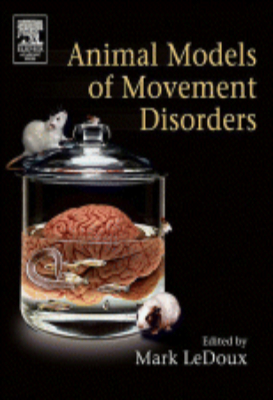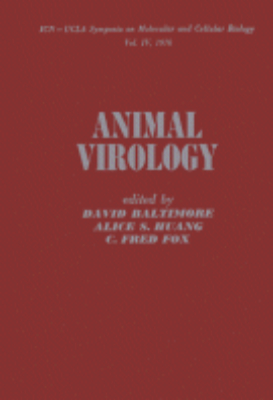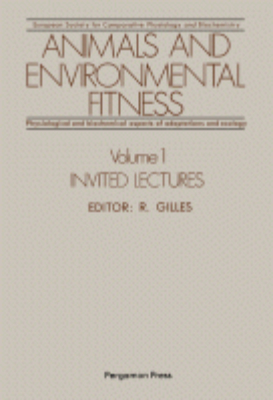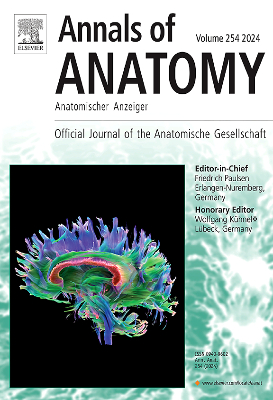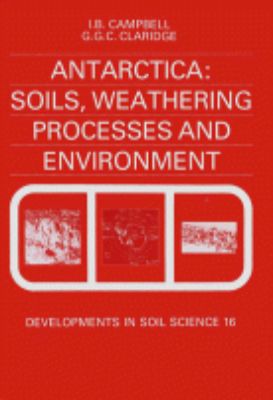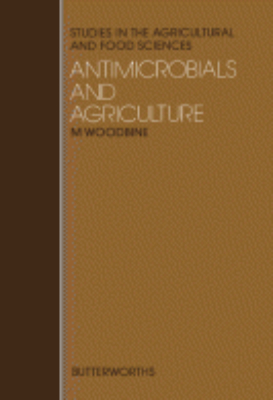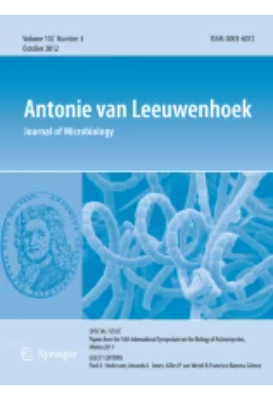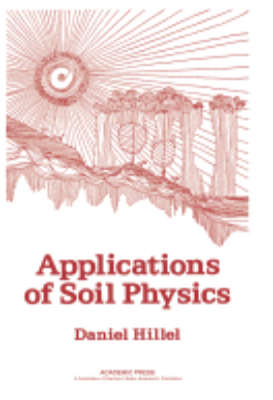E-Resources
Animal Hormones
Animal Hormones: A Comparative Survey, Part IKinetic and Metabolic Hormones provides a comprehensive coverage of the properties of kinetic and metabolic hormones of both vertebrates and invertebrates; the title particularly covers the sources, actions, and secretion of the said hormones. The text first details the general concerns with the hormones, such as the history, chemical activators, mechanical activation, types, and identification. The next chapter covers the sources of kinetic and metabolic hormones. Chapters 3 and 4 tackle kinetic hormones, while Chapter 5 discusses metabolic hormones. The book will be of great interest to students, researchers, and practitioners of zoology and biochemistry.
Animal Learning and Cognition
How do animals learn By what means can animals be conditioned This volume of the acclaimed Handbook of Perception and Cognition, Second Edition, reviews such basic models as Pavlovian conditioning as well as more modern models of animal memory and social cognition. Sure to represent a benchmark of a vast literature from diverse disciplines, this reference work is a useful addition to any library devoted to animal learning, conditioning behavior, and interaction.
Animal Life-cycle Feeding and Nutrition
Animal Life-Cycle Feeding and Nutrition reviews developments in feeding and nutrition throughout an animal's life cycle and covers a wide range of topics, from utilization of nutrients such as carbohydrates and proteins to nutrient digestion by ruminants, swine, poultry, and horses. Feedstuffs such as pasture and harvested forages, protein concentrates, and cereal and sorghum grains are also discussed. Comprised of 21 chapters, this book begins with a discussion on nutrients and their utilization, including carbohydrates, lipids, proteins, and minerals and vitamins. Nutrient digestion by ruminants, swine, poultry, and horses are then compared and feedstuffs for livestock are evaluated. The next section deals with feedstuffs such as pasture and harvested forages, protein concentrates, and cereal and sorghum grains, together with molasses, manure, and other miscellaneous feed ingredients. The remaining chapters explore the effect of processing on the nutrient value of feedstuffs; balancing of rations; and feeding of animals including swine, beef and dairy cattle, poultry, sheep, horses, dogs, and goats. This monograph is designed for students of animal sciences, for veterinary students as well as doctors of veterinary medicine, and for practitioners of livestock feeding.
Animal Memory
Animal Memory is based on the proceedings of a symposium held at Dalhousie University in the summer of 1969. Each of the seven chapters provide broad coverage of the topic with which it is concerned, and the experimental work reported is representative of the most significant developments in the field. The book includes two studies on associative memorythe memory of one event which is essential to its association (over a delay) with subsequent events. One study shows that shows that animals can remember events from one learning trial to the next and that their behavior will be determined largely by the sequences of trials with differing outcomes; the other presents research on the association of flavors with toxicosis in a conditioning paradigm. Separate chapters deal with retentive memorythe retention and forgetting of learned behavior over time; and the physiological basis of memory in terms of consolidation theory. These studies demonstrate that animals do forget and examine theories of forgetting. The final chapter provides a critical discussion based on all of the foregoing material in which the topics covered in the book are related to current work on human retention and forgetting.
Animal Migration Orientation and Navigation
Animal Migration, Orientation, and Navigation presents the various aspects of animal migration, including the evolution of migration, climatic and meteorological influences, and bioenergetics. This book discusses the physiological control, sensory systems, orientation and navigation, and biological clocks and phenology aspects of animal migration. Organized into five chapters, this book begins with an overview of the migration strategies of animals in the context of a space continuum. This text then explains the influence of short- and long-term climatic cycles on the spectrum of migratory patterns in nature. Other chapters consider the energetic requirements of different migration strategies and the energy stores of the migrants. This book discusses as well the physiological basis of animal migration, with emphasis on endocrinal findings on the timing and energetic aspects of different migration strategies. The final chapter deals with the mechanisms used in direction finding by migrating animals. This book is a valuable resource for biologists and ecologists.
Animal Models and Hypoxia
Animal Models and Hypoxia consists of proceedings from an international symposium. The text discusses the developments made on the study of brain metabolism. An article about the regional utilization of glucose in the brain of mammals is presented. There is also a section that reviews the energy metabolism in the nervous system of insects. The topics covered includes the role of sympathetic innervation in the regulation of cerebral blood flow during hypercapnia, the comparative aspects of energy metabolism in non-mammalian brains under normoxic and hypoxic conditions, and an anoxic rat model. A method developed to gauge the rates of glucose utilization in the central nervous system is evaluated. This method is effective in mapping the functional neural pathways base on stimulated metabolic responses. Factors that contribute to the development of gerontopsychiatric disorders in men are reviewed. The book will provide useful information to doctors, veterinarians, neurologists, students, and researchers in the field of neurology.
Animal Models for the study of human disease
"Animal Models for the Study of Human Disease identifies important animal models and assesses the advantages and disadvantages of each model for the study of human disease. The first section addresses how to locate resources, animal alternatives, animal ethics and related issues, much needed information for researchers across the biological sciences and biomedicine.The next sections of the work offers models for disease-oriented topics, including cardiac and pulmonary diseases, aging, infectious diseases, obesity, diabetes, neurological diseases, joint diseases, visual disorders, cancer, hypertension, genetic diseases, and diseases of abuse. Key Features. Organized by disease orientation for ease of searchability. Provides information on locating resources, animal alternatives and animal ethics. Covers a broad range of animal models used in research for human disease"
Animal Models in Eye Research
"The eye is a complex sensory organ, which enables visual perception of the world. Thus the eye has several tissues that do different tasks. One of the most basic aspects of eye function is the sensitivity of cells to light and its transduction though the optic nerve to the brain. Different organisms use different ways to achieve these tasks. In this sense, eye function becomes a very important evolutionary aspect as well. This book presents the different animal models that are commonly used for eye research and their uniqueness in evaluating different aspects of eye development, evolution, physiology and disease. Key Features. Presents information on the major animal models used in eye research including invertebrates and vertebrates. Provides researchers with information needed to choose between model organisms. Includes an introductory chapter on the different types of eyes, stressing possible common molecular machinery"
Animal Models of Movement Disorders
The use of animal models is a key aspect of scientific research in numerous fields of medicine. This book vigorously examines the important contributions and application of animal models to the understanding of human movement disorders and will serve as an essential resource for basic neuroscientists engaged in movement disorders research. Academic clinicians, translational researchers and basic scientists are brought together to connect experimental findings made in different animal models to the clinical features, pathophysiology and treatment of human movement disorders. A vital feature of this book is an accompanying DVD with video clips of human movement disorders and their corresponding animal models. The book is divided into sections on Parkinson disease, Huntington disease, dystonia, tremor, paroxysmal movement disorders, ataxia, myoclonus, restless legs syndrome, drug-induced movement disorders, multiple system atrophy, progressive supranuclear palsy/corticobasal degeneration and spasticity. This book serves as an essential resource for both clinicians interested in the science being generated with animal models and basic scientists studying the pathogenesis of particular movement disorders. Key Features * Provides a single comprehensive resource on animal models of movement disorders that academic clinicians, translational researchers, and basic neuroscientists can refer to * Includes contributions by expert movement disorder clinicians and top-level researchers in the field * Features a DVD containing over 170 video clips of human movement disorders and the corresponding animal models
Animal Population Ecology
Animal Population Ecology focuses on the interaction between the various factors that affect an animal population. Population ecology is the study of the factors that determine the abundance of species and is concerned with the identification and mode of action of those environmental factors that cause fluctuations in population size and of those which determine the extent of these fluctuations. Organized into 11 chapters, the book initially examines some of the basic ideas about animal populations and defines many of the terms used by population ecologists. Then, it describes the action of the most important factors affecting population size. The interaction between these factors is demonstrated in chapters 8 and 9, wherein the results from studies of a few selected species are presented in detail. Finally, chapters 10 and 11 cover the development of generalized theories of population dynamics and their application to practical problems. With a strong focus on intensive study of animal populations in the field, rather than elaborate theories, the book will be helpful to population ecologists, animal researchers, teachers, and students.
Animal Products in Human Nutrition
Animal Products in Human Nutrition evaluates the contributions of food derived from animals to a balanced diet. The individual chapters in this book are organized into two major sections. The first section begins with a history of the use of animal-derived foods from the early ages of mankind, followed by a treatise of economic and resource costs of animal foods, including use of industrial and agricultural by-products and fish. Trends in the changes in the composition of American diets and the metabolism and disposition of common environmental toxins within animal tissues are also included in this section. The second section details the essential nutrients provided by animal products, as well as the possible effects of consumption of animal products on the development of hypertension, milk intolerance, infections from food-borne bacteria, cancer, and atherosclerosis. This book will be useful to agricultural scientists, journalists, professionals that deal with human nutrition, and human nutritionists and dietitians.
Animal Science
Animal Science: Reproduction, Climate, Meat, Wool is a 20-chapter book that begins with the concept of animal reproduction, including reproductive hormones, breeding, fertility, and fecundity. The next set of chapters elucidates the influence of climate on the animals. Subsequent chapters explore specific topics on meat and wool, in particular, the beef carcass; meat quality; mutton; lamb; composition and properties of wool; definition and measurement of wool quality; and quantitative aspect of wool growth. This book will be valuable for advanced students, as well as for advanced producers.
Animal Simples
Animal Simples: Approved for Modern Uses of Cure presents a variety of animal simples, which is regarded from a dietetic as well as from a medicinal point of view. This book dispels various prejudices against certain edible clean-feeding insects, eminently delicate, and remedial, which have failed to gain favor as food or medicine. The animal simples described in this book are arranged alphabetically to guide the readers. This text provides useful information regarding the remedies yielded by animals. This book is a valuable resource for readers who are interested on the usefulness of animal simples.
Animal Toxins
Animal Toxins is a collection of papers that tackles the advancement in studies that aim to enhance the contemporary understanding of animal toxins. The materials in the text are organized according to the organism they cover. The first section tackles the concerns with venomous arthropods, such as the structure of the venom gland of the black widow spider Latrodectus mactans and the biochemical-immunochemical aspects of the venom from the scorpion Centruroides sculpturatus. Next, articles about poisonous marine animals are presented, which include differentiation of the poisons of fish, shellfish, and plankton and block of sensory nerve conduction in the cat by mussel poison and tetrodotoxin. In Section III, the selection reviews papers about snakes and amphibians, such as epidemiological methods in studying venomous snakebites and chemistry of cytotoxic substances in amphibian toxins. The book will be of great interest to toxicologists, zoologists, and biochemists.
Animal Vigilance
"Animal Vigilance builds on the authors previous publication with Academic Press (Social Predation: How Group Living Benefits Predators and Prey) by developing several other themes including the development and mechanisms underlying vigilance, as well as developing more fully the evolution and function of vigilance. Animal vigilance has been at the forefront of research on animal behavior for many years, but no comprehensive review of this topic has existed. Students of animal behavior have focused on many aspects of animal vigilance, from models of its adaptive value to empirical research in the laboratory and in the field. The vast literature on vigilance is widely dispersed with often little contact between models and empirical work and between researchers focusing on different taxa such as birds and mammals. Animal Vigilance fills this gap in the available material. Key Features. Tackles vigilance from all angles, theoretical and empirical, while including the broadest range of species to underscore unifying themes. Discusses several newer developments in the area, such as vigilance copying and effect of food density. Highlights recent challenges to assumptions of traditional models of vigilance, such as the assumption that vigilance is independent among group members, which is reviewed during discussion of synchronization and coordination of vigilance in a group. Written by a top expert in animal vigilance"
Animal Virology
Animal Virology consists of papers presented in a meeting which considered broad issues and advances in animal virology and tumor viruses. This book is divided into nine parts, representing the nine sessions of the meeting. Five of the nine sections deal particularly with viruses known to be oncogenic in animals, and one of these covers explicitly human oncornaviruses. The other four sections describe the processes common to all viruses: replication, protein synthesis, and persistence, wherein emphasis is given to negative strand viruses and plant viruses.
Animal Virus Genetics
Animal Virus Genetics is a collection of scientific presentations of the ICN-UCLA Symposia on Molecular and Cellular Biology, held at the University of California, Los Angeles in 1980. The papers in the compendium focus on the basic genetic model systems; the uses of genetic approaches to study basic problems in molecular biology; and on the increasing application of genetic systems to the study of more complex viral-host interactions such as viral virulence and persistence. Microbiologists, cellular biologists, and virologists will find the book insightful.
Animals and Environmental Fitness: Physiological and Biochemical Aspects of Adaptation and Ecology: Volume 1 1980
Animals and Environmental Fitness, Volume 1: Invited Lectures is a collection of papers that tackles ecological concerns. The materials of the book are organized according the main issue of their contents. The text first tackles the chemical factors of the environment, such as water and oxygen availability, ecomones, and pollutants. The other half of the book encompasses the physical factors of the environment that include light, pressure, and temperature. The text will be of great use to scientists who study the interaction between flora, fauna, and the total environment.
Animals and Environmental Fitness: Physiological and Biochemical Aspects of Adaptation and Ecology: Volume 2 1980
Animals and Environmental Fitness: Physiological and Biochemical Aspects of Adaptation and Ecology, Volume 2 contains the proceedings of the First Conference of the European Society for Comparative Physiology and Biochemistry held in Lige, Belgium, on August 27-31, 1979. The papers explore the physiology and biochemistry of animal adaptation and ecology and cover topics ranging from amino acid transport and metabolism during osmotic shock to the role of organic compounds in osmoregulation in plants and animals. This volume is comprised of 89 chapters and begins with an analysis of the transport and metabolism of amino acids under osmotic stress, followed by a discussion on cell volume regulation in isolated heart ventricles from the flounder, Platichthys flesus, perfused with anisosmotic media. Subsequent chapters focus on the effects of cholinergic drugs on the osmotic fragility of erythrocytes; strategies of osmoregulation in the fiddler crab Uca pugilator; ionic regulation in the African catfish Clarias mossambicus in water and air; and environmental and endocrine factors controlling osmotic water fluxes in gills of Sarotherodon (tilapia) mossambicus. The effect of seawater adaptation on the phosphatidyl-choline metabolism in the eel is also considered, along with evaporative water loss in anuran amphibians. This book will be of value to zoologists, physiologists, biologists, and biochemists.
Antarctic Fish Biology
This important volume provides an original synthesis and novel overview of Antarctic fish biology, detailing the evolution of these fish in some of the most unusual and extreme environments in the world. Focusing on one group of fish, the notothenoioids, which contain the majority of the current organismal diversity, this book describes a fauna that has evolved in isolation and experienced incredible adaptive radiation by acquiring numerous physiological specializations. Darwin's finches and African cichlids may be joined by Antarctic fishes as exemplars of adaptive radiation.The books' coverage is detailed and comprehensive, and the author clearly recognizes the fact that these fish are a component of a most interesting and biologically unique ecosystem and environment. Topics inAntarctic Fish Biologyinclude past and present environments, fossil records, taxonomic composition of fauna, systematic relationships, diversification, and physiological adaptations.
Antimetabolites in Biochemistry Biology and Medicine
FEBS: Federation of European Biochemical Societies, Volume 57: Antimetabolites in Biochemistry, Biology, and Medicine is a collection of papers that presents that advancement in the field of antimetabolites research. The title first covers the use of antimetabolites in enzymology, and then proceeds to tackling the consequences of analog incorporation into nucleic acids. Next, the selection discusses the rational approach to the use of antimetabolite in commination cancer chemotherapy an in immunosuppression. The text also covers the aspects of selective antiviral action. In the last part, the selection details various compounds, along with their synthesis and mechanisms of action. The book will be of great use to researchers and practitioners of biochemistry, biology, and medicine.
Applications of Soil Physics
Applications of Soil Physics deals with the applications of soil physics and covers topics ranging from infiltration and surface runoff to groundwater drainage, evaporation from bare-surface soils, and uptake of soil moisture by plants. Water balance and energy balance in the field are also discussed, along with tillage and soil structure management. The development and extension of Penman's evaporation formula is also described. This book is comprised of 14 chapters and begins with a systematic description of the field-water cycle and its management, with emphasis on infiltration and runoff; redistribution and drainage; evaporation and transpiration; and irrigation and tillage. Subsequent chapters focus on transpiration from plant canopies; freezing phenomena in soils; scaling and similitude of soil-water phenomena; spatial variability of soil physical properties; and movement of solutes during infiltration into homogeneous soil. Concepts of soil-water availability to plants are considered, together with principles of irrigation management and the advantages and limitations of drip irrigation. This monograph is intended for upper-level undergraduate and graduate students of the environmental, engineering, and agronomic sciences.

